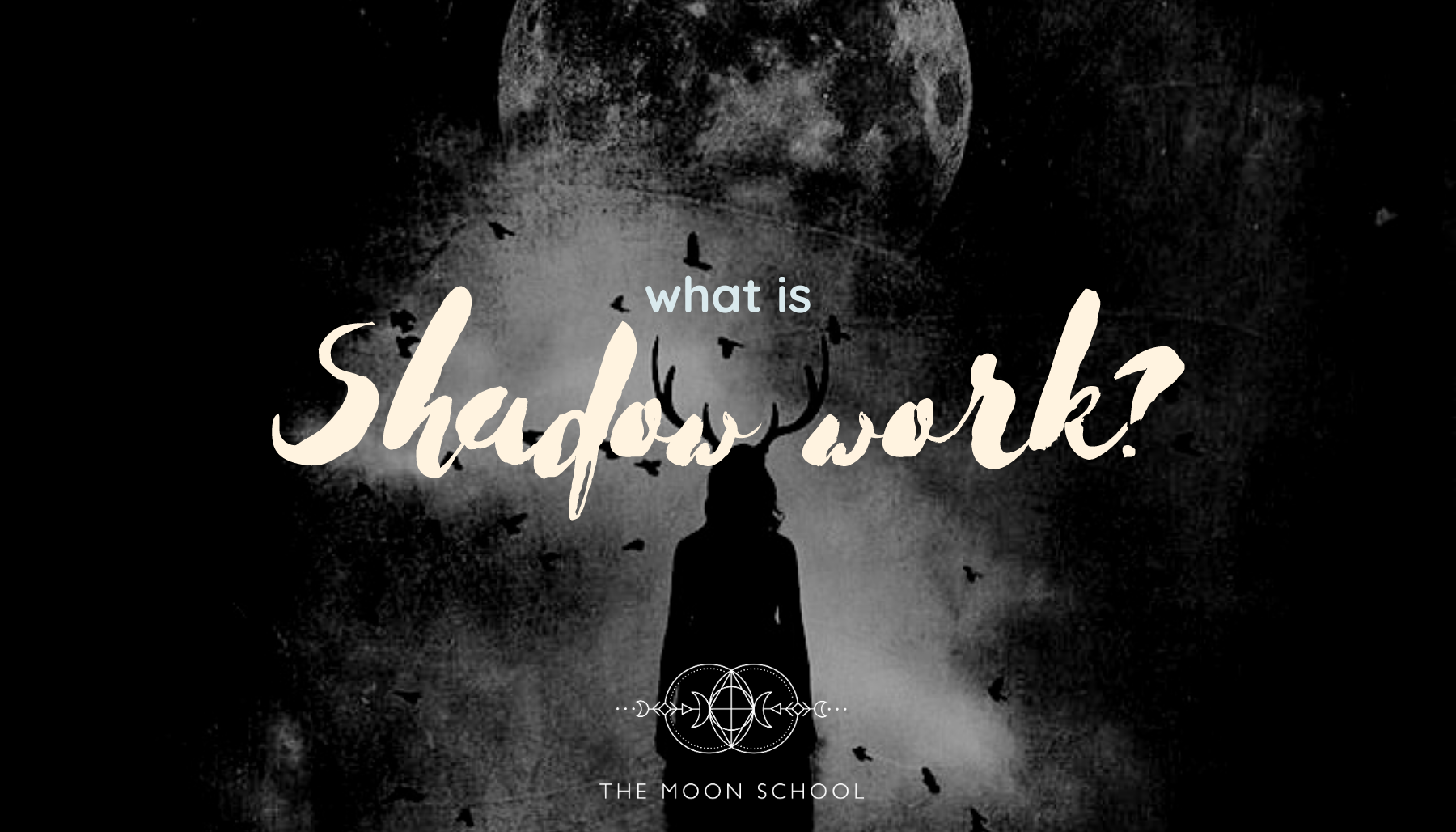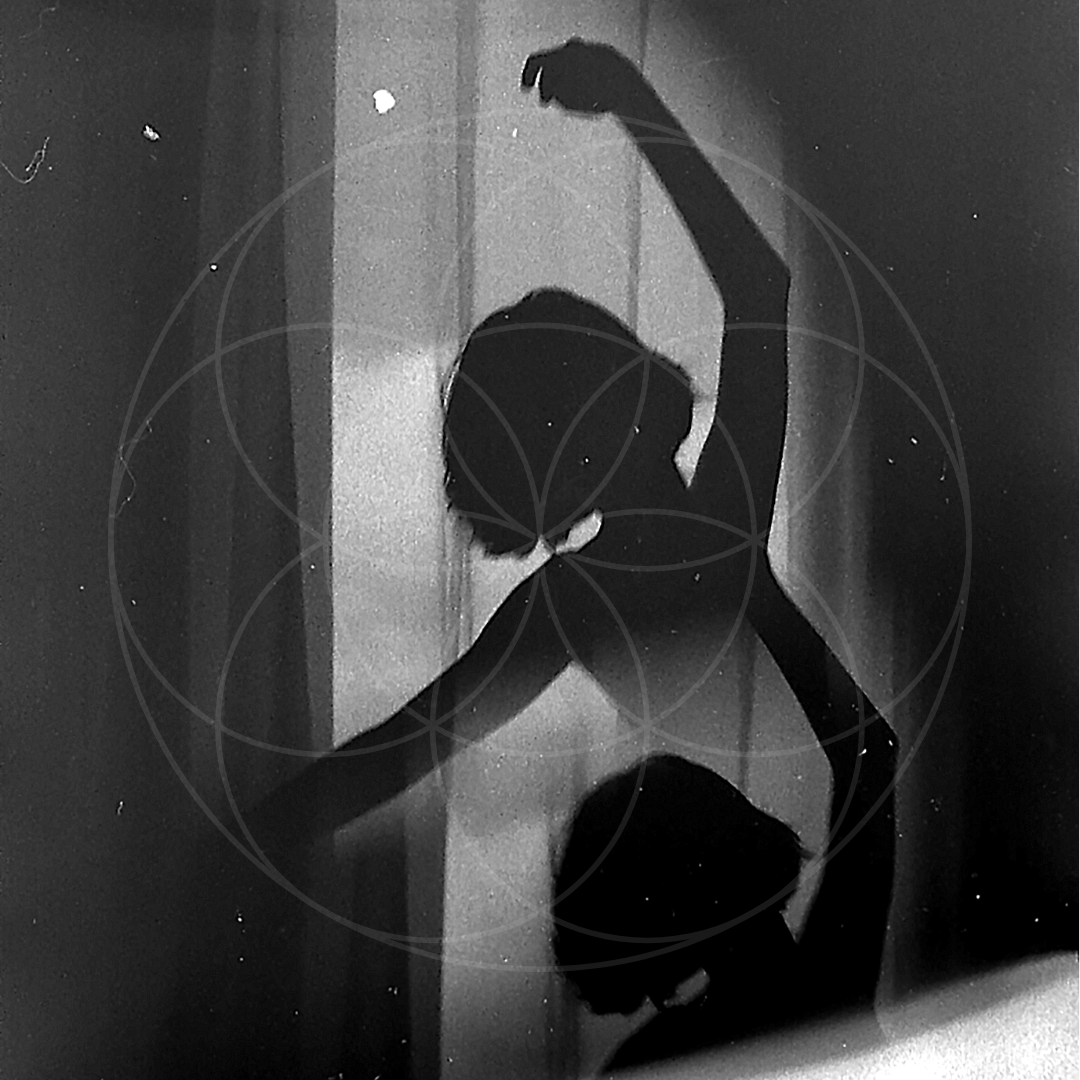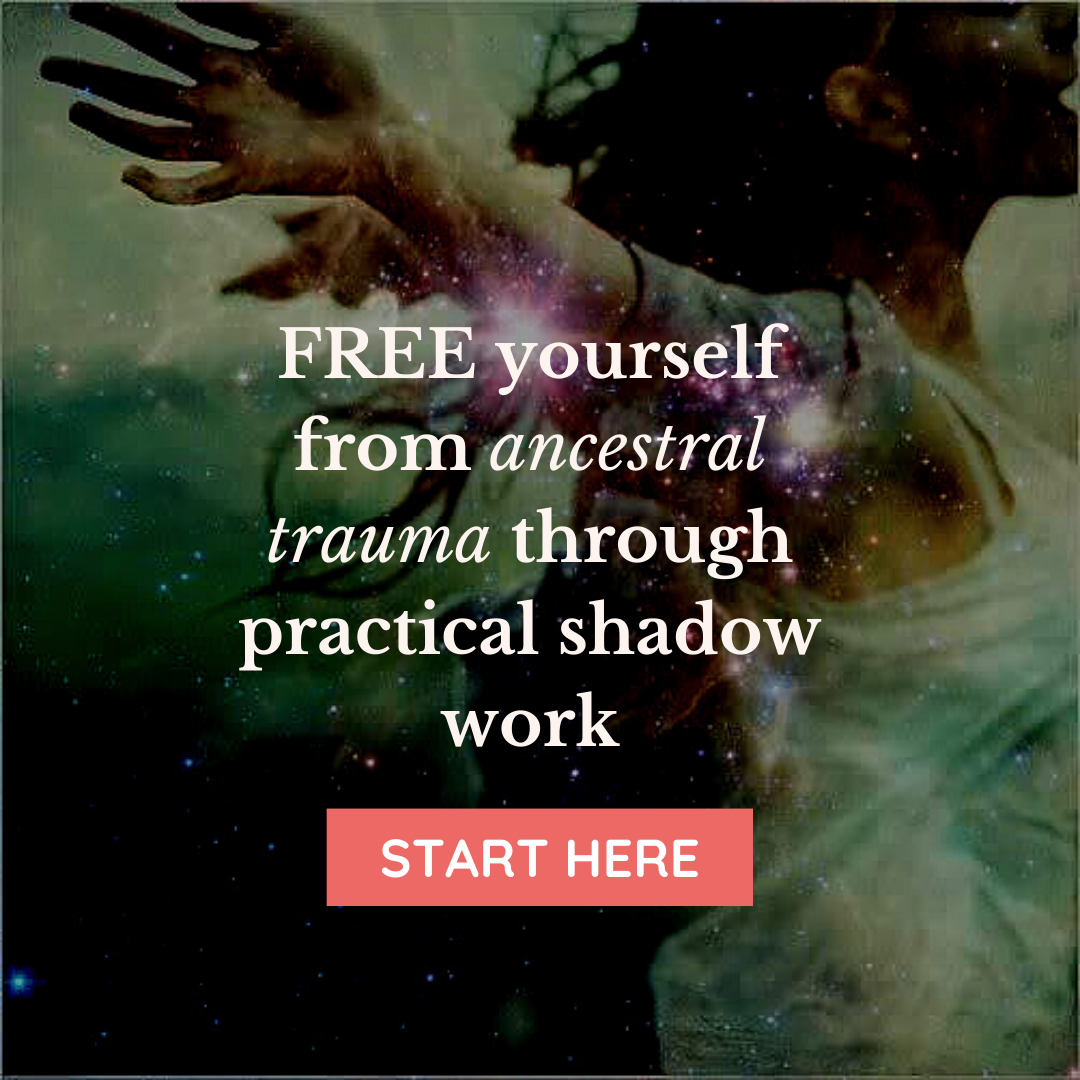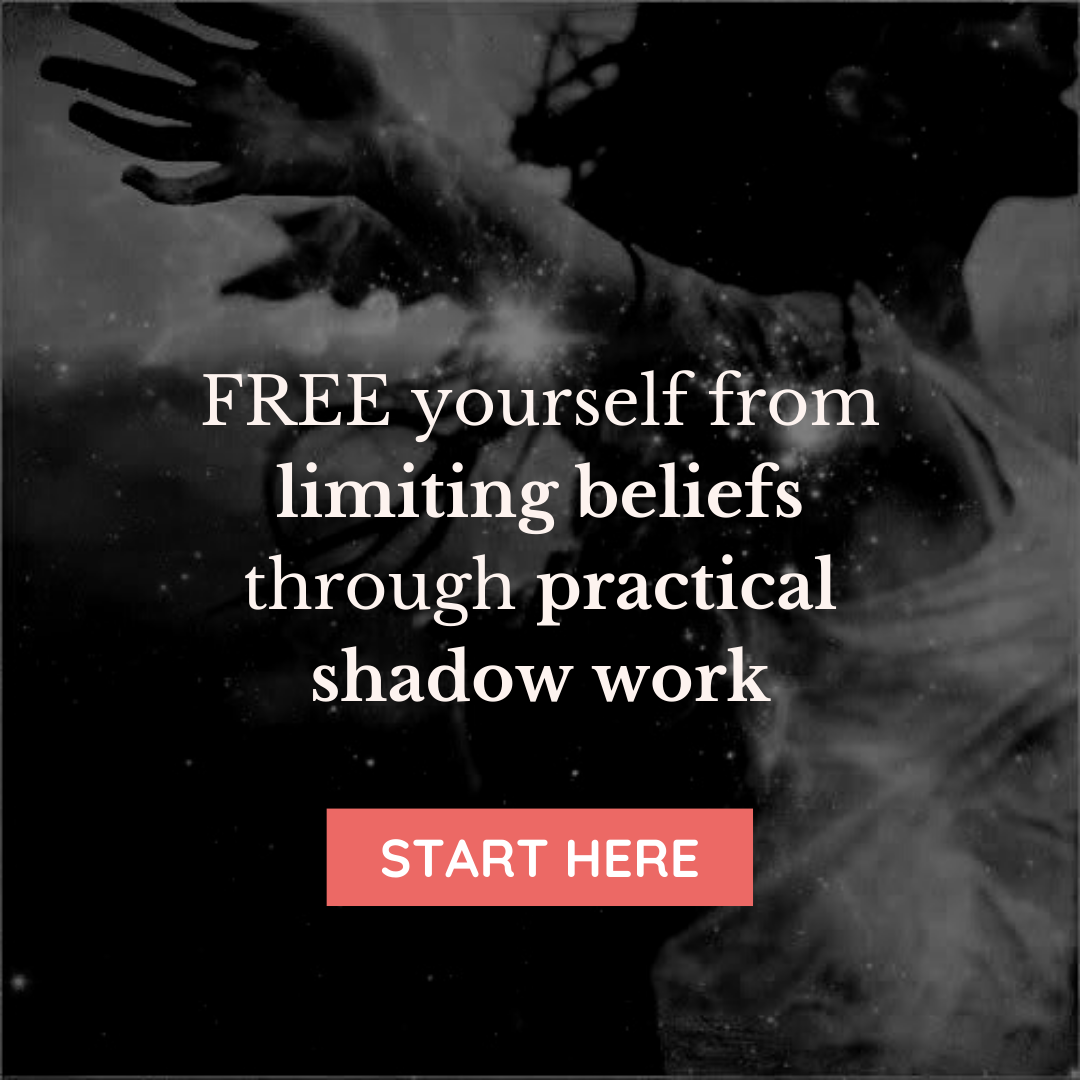Shadow work is the spiritual and psychological practice of turning toward your unconscious to discover the hidden aspects of self that exist there.
Once upon a time exploring the shadow self was the domain of psychologists alone. But today, doing shadow work exercises has become an integral part of the personal growth landscape. In fact, many people regard shadow work as a spiritual practice all of its own.
You can’t keep chasing the light, without turning around to face the dark side eventually…
Maybe you’ve heard the terms shadow, shadow self, or shadow side? And maybe it sounds intriguing…? But if you don’t come from the field of psychology, then shadow work can seem pretty daunting at first.
So let’s break this information down, in super-simple terms, and first ask: What is the shadow? And what does it mean to do shadow work?
What is the shadow self?
We all have a shadow.
Even the most enlightened of folk (especially the most enlightened of folk!) have a shadow self – a side that isn’t illuminated. So this applies to everyone.
Just like the shadow that casts on the ground where you stand, your shadow twin is like an energetic, psychological, emotional shadow. And this shadow side is your constant companion, and therefore affects every aspect of your life.
But… and here’s the “but”: You can’t see your shadow. It lives in your unconscious mind (and also in your body, but we’ll get to that later). So everything it contains, you’re also unconscious of.
It was the Swiss psychiatrist Carl Jung who first coined the term “Shadow Self”, meaning the unknown, unconscious side of the psyche.
The shadow is a part of the psyche that contains all of our hidden parts. That is, the feelings, qualities, characters, behaviors, urges, impulses, and desires your conscious mind won’t accept.
These are parts of the self that are disallowed. So they are separate. Yet intrinsically part of you, as both your ego (that’s the conscious you) and your shadow (that’s the unconscious you) both developed simultaneously.
Why does the shadow form?
The shadow forms because at some point in your early life, you decided to reject certain parts of your personality.
Seems harsh, doesn’t it? But this ‘decision’ was likely totally unconscious – you didn’t even realize you were making it. The reason for this, was that certain experiences you went through – likely as a child – led you to believe that unless you rejected these parts of yourself, you wouldn’t survive.
So whatever qualities, traits, or characteristics that you perceived put your survival at risk, were the qualities, traits, and characteristics that ended up in the shadow.
Maybe someone gave you the impression these parts were unwelcome, undesirable, unlovable, or unacceptable. Maybe when you expressed them, you were met with anger or disappointment.
Or perhaps you were shamed, ridiculed, or silenced. So these character traits were pushed away, and stuffed down somewhere deep inside. You made some kind of silent promise, to never let them back out. End of.
Your shadow is the “container” for the unwanted aspect or pieces of you.
The process of splintering and splitting them apart from your whole self, is called fragmentation.
… Because it’s the process by which fragments of your psyche are split off from the whole. Sounds dramatic, but it usually happens without any conscious awareness.
Curious about inner child work?
Read this post next – Heal your Past: A Guide to Inner Child Work
Is the shadow caused by trauma?
Our shadow selves are often caused by trauma, particularly severe trauma that triggers the process of fragmentation to occur.
When they begin to practice shadow work, many people with past trauma discover they have wounded parts that are buried deep, deep within the unconscious, often preventing them from moving forward.
Shadow work can help these people access repressed memories, and be a HUGE benefit in enabling them to move their shadow aspects, dislodging negative feelings and improving their mental health dramatically.
But remember, your shadow forms in tandem with your ego, and trauma is subjective.
Not everyone shares the same experiences of what is traumatic. An event that simply feels uncomfortable for you, maybe deeply shocking and traumatizing for someone else. So your own shadow may have developed without any significant trauma at all.
The personal shadow usually forms in childhood. But some of the qualities that your shadow twin holds may have been ‘in the shadows’ for many, many generations. We’ve been suppressing aspects of the self for millennia into something called the “collective unconscious”. It’s nothing new, especially in the West.
How suppressing your shadow affects you…
It’s important to realize that when these disowned parts are placed into the shadow, they don’t disappear. Just because they’re removed from the light of your consciousness, they don’t cease to exist! These pieces continue to express, affecting your life experiences. Except now they are much harder to recognize (and control).
“Every person must live the inner life in one form or another. Consciously or unconsciously, voluntarily or involuntarily, the inner world will claim us and exact its dues. If we go to that realm consciously, it is by our inner work: our prayers, meditations, dream work, ceremonies, and Active Imagination. If we try to ignore the inner world, as most of us do, the unconscious will find its way into our lives through pathology: our psychosomatic symptoms, compulsions, depressions, and neuroses.”
– Robert Johnson
This impact of suppressing and denying your shadow can lead to issues such as –
- Developing unconscious habits
- Playing out unhealthy behavioral patterns
- Toxic relationship dynamics
- Codependency
- People pleasing
- Low self-esteem
- Anxiety, depression, and mental illness
- Self-sabotage
- Self-criticism
- Judgment and criticism of others
- Addictions
- Obsessive behavior
Realize that it’s not the shadow wreaking all of this havoc in your life. It’s the suppression of the shadow.
When the shadow part of the self is suppressed and squeezed and silenced, the naturally positive qualities it holds become distorted. And it’s this distortion that tends to erupt, escaping at exactly the wrong minute, getting you into trouble.
These distorted darker parts then get a bad rap. They get labeled as “darker aspects”, troublesome, ugly, angry, and over-emotional. And they are disowned further, suppressed deeper.
BUT your Shadow is actually holding a lot of power.
Yes, the dark is powerful! And not only in a “bad way”.
In fact, once you begin to do your shadow work, you’ll realize you have access to HUGE amounts of latent power and energy, that you had NO idea you possessed!
What is Shadow Work?
What does it actually mean to do shadow work? Shadow work means turning away from the conscious mind, and looking to the other side – the darker side – of the psyche.
Using tools, methods, and practices, shadow workers seek out the hidden pieces and the disowned parts of self. And crucially, we meet what we find with compassion and kindness.
Remember that your shadow formed when you were made to believe certain apsects of your personality were unwelcome, undesirable, unlovable, or unacceptable. Shadow work asks us to approach those aspects in a new way.
By offering these exiled parts our pure presence, we’re able to give them something they didn’t get the last time they emerged – acceptance.
… And this sounds so simple, doesn’t it? But the results are profound!
What are the benefits of shadow work?
The benefits of shadow work range from better relationships to radical self-acceptance to awakened creativity! Doing your shadow work can cause ripple effects of positivity that come directly from new levels of self-awareness. These include:
- Deeper self-compassion (which leads to more compassion for others)
- Releasing fear
- Releasing pain (emotional and even physical pain)
- Releasing shame
- Letting go of emotional pain
- More honest and intimate relationships
- Deeper connections with other people
- Regulated emotions
- More energy and vitality
- Expressing your best version
- Reaching your potential in life
- More synchronicity
READ THIS POST for more benefits of shadow work.
If you’re on a Spiritual path, then shadow work is unavoidable
The truth is, it doesn’t matter how much work spiritual awakening or personal growth work you do, unless you dive deep into the shadow, you’re only accessing half of yourself (and your power)… at most.
Because however much emotional healing, conscious manifestation, or meditation you do, the result isn’t going to match up to your desire. Your shadow twin will STILL be there in your unconscious mind, holding BACK your authentic self from fully living.
This can be seen in the New Age obsession with “love and light”, and the avoidance many spiritual seekers have of embracing the darker aspects of self. There’s a genuine fear in some communities, that allowing the dark side to emerge will rupture the “high vibe” and cause a carefully maintained energetic field to implode.
This is spiritual bypassing at its best.
Interested? READ THIS POST – Will Shadow Work bring Negativity into my Life?
But denying the truth of the shadow is not only perpetuating the shame and suppression of centuries. It’s also preventing the real growth that comes from deep, compassionate self-reflection.
No enlightenment, ascension, or awakening will truly come from turning away from the shadow side.
How to do shadow work (in 3 steps)
Shadow work is a deeply personal process. It requires presence, kindness, and utter compassion. It’s not easy – to the average person, it can actually feel counterintuitive. Leaving the comfortable realms of what’s safe and familiar, to enter the dark unknown doesn’t really make a whole heap of sense!
But it does. You’ll see why.
Most shadow work methods can be broken down into 3 steps. Here they are –
Step 1 – Develop self-awareness
This can be tricky.
The very nature of shadows means they exist in the dark of the unconscious – and we can’t be aware of what’s in there! PLUS, whatever pieces of personality, the shadow contains, you’ve already decided to disown! Becoming aware of this inner landscape is a bit like learning to see in the dark. It may not be easy at first, but it’s not impossible.
You can enter into the dark world of the subconscious mind by tracking –
- Your inner dialogue
- The focus of your internal chatter
- Any habits or behaviors you tend to berate and shame in yourself
- Judgments or ways you criticize others
- Qualities in other people that irritate you
- Unhealthy or codependent dynamics in relationships
- Emotions of envy and admiration you have for others
- Situations, types of conflict, or even people that cause strong emotions to flare.
- Labels you project onto others (she’s a slut, she’s too forward, he’s lazy, for example)
All or any of these different scenarios may be triggers, that unconsciously remind you of the very first event (or trauma) that caused the shadow self to fragment in the first place.
Developing the self-awareness you need to notice but not act on them, takes practice and discipline.
… And they’re only the first steps to spot patterns, and begin your journey into the dark side!
READ THIS post for 6 ways to meet your shadow twin
Step 2 Feel fully
A huge part of any shadow work journey involves expanding your capacity to feel.
Allowing yourself to feel the entirety of any emotion isn’t quite as easy as it sounds.
Remember that when doing shadow work, you’re building awareness of a quality that at some point, it likely wasn’t safe for you to feel and express. And you’re also experiencing the real-time emotional reactions of that quality re-emerging in the present. It’s a LOT for any human being to handle! (And this is why shadow work requires a ton of courage and strength).
To build up your capacity to feel, you may need to spend time working on regulating your nervous system. Do this before you even begin the most basic exercises in shadow work – dont’ wait until it’s too late. Or if you know you’re holding onto a lot of trauma, or are very easily triggered, consider getting some professional help or working with a licensed therapist.
If and when you’re capable, take the time to BE with your emotions. Whether you feel anger, frustration, sadness, despair, or anything in between – let these feelings expand into sensation, and sit with them.
Acknowledge them.
Give them space to express themselves, to move through your body, and most importantly, to be validated.
In our culture, we rarely validate “negative” emotions
Take the example of a child having a tantrum – most parents just want them to stop, shutting down that expression as quickly as possible. We tend not to think we have choices in how to meet BIG emotions in our society, but in most cases, actually, we do.
Validation of BIG feelings is where shadow work really has the power to transfom us, and the magic happens!
If you’re in a situation where you can’t do this (ummm, triggered by your boss in a meeting at work?) then make space to do this work later on, when you DO have time.
Step 3 – Shadow integration
Last comes the process of re-integrating the pieces of your shadow, so they’re brought up into the light of your consciousness once again.
Remember how the shadow contains the fragmented pieces of your true self that were repressed, disowned, and pushed out of your awareness?
Shadow work is the reversal of this process.
Instead of pushing these pieces away, you need to welcome them back in.
For many people, simply feeling IS the integration that the inner self needs, to become more whole.
For others, integration may require –
- Movement, dance, or somatic experiencing
- Journaling with shadow work prompts (also a technique for step 1 – developing self-awareness)
- Letter writing
- Ritual
- Spending time in nature
- Removing a certain person from your life
- Art therapy
- Learning to step back from triggering situations
Some types of integration will work better for you than others, but all involve self-compassion and true acceptance.
10 tips for starting a shadow work practice
I say practice because shadow work isn’t something you do just once! Opening the door to your inner world, especially the darker side, is the start of a journey you can’t easily step away from! Here are a few suggestions to ease the way…
Love yourself unconditionally
Take it slowly and be patient with yourself – shadow work isn’t a race you need to win.
Make regulating your nervous system a priority
Keep a journal to track and reflect on your progress.
Become aware of your dreams and active imagination. As things move through your unconscious mind, look out for symbols, messages and metaphor appearing in these liminal states.
Schedule in set times – weekly, fortnightly, or according to the Moon cycles – to focus on your shadow work tasks. A rhythm will really help.
That said… take breaks!
If something doesn’t resonate with you, try something else, don’t give up too soon.
Keep an open mind to your healing coming in a multitude of different ways. Remember, that shadow work is working with the unconscious. It’s not a linear space, so you may not need to understand the healing, for it to occur.
Maintain your overall emotional health, as a priority – if you don’t feel good for any length of time, stop what you’re doing and seek help.
Healing our shadow selves isn’t a quick fix or a magic bullet
Shadow work is an ongoing process that you’ll likely need to keep practicing over and over. But each time you do, your shadow will integrate a little more, you’ll become more whole, and the emotional blocks that your unconscious used to hold over you will loosen up.
What your conscious mind yearns for will gain more momentum, and you’ll find that miraculously, life changes for the better! Yes, it really does!
Leave me a comment below if you’ve started work to integrate your shadow twin. And if you want to learn more?














